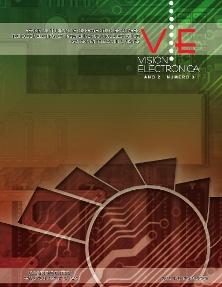DOI:
https://doi.org/10.14483/22484728.18426Published:
2019-03-13Issue:
Vol. 2 No. 1 (2019): Special editionSection:
A Context VisionChallenge problems in the characterization of different types of insight present in the solution of mathematical problems
Problemas reto en la caracterización de diferentes tipos de insight presentes en la solución de problemas matemáticos
Keywords:
Perspicacia, Pensamiento divergente, Pensamiento convergente (es).Keywords:
Insight, Divergent thought, Convergent thought (en).Downloads
Abstract (en)
This paper aims at showing some problems to characterize the different types of insight students show in non-routine problems. Knowing there are diverse classifications for mathematical thought, one of them will be taken into account: the one in which some authors classify mathematical thought into two categories: convergent and divergent. For Guilford (1950) convergent thought is based on the search of a determined or conventional answer which is identified as the only possible solution to a problem, [1]. On the other side, divergent thought is identified with a situation in which various roads are taken to find the best and/or new solution to the problem. This research project evidenced how in two types of mathematical thought, both convergent and divergent, different types of insight can be described, and, regularly, when they occur, they end up in the successful solving of the problem.
Abstract (es)
Este artículo tiene como objetivo mostrar algunos problemas para caracterizar los diferentes tipos de conocimiento que los estudiantes muestran en problemas no rutinarios. Sabiendo que existen diversas clasificaciones para el pensamiento matemático, una de ellas se tendrá en cuenta: aquella en la que algunos autores clasifican el pensamiento matemático en dos categorías: convergente y divergente. En particular, para Guilford el pensamiento convergente se basa en la búsqueda de una respuesta determinada o convencional que se identifica como la única solución posible a un problema; y, por otro lado, el pensamiento divergente se identifica con una situación en la que se toman varios caminos para encontrar la mejor y / o nueva solución al problema. Este documento de investigación evidenció cómo, en los dos tipos de pensamiento matemático -tanto convergente como divergente- se pueden describir diferentes tipos de conocimiento y, regularmente, cuando ocurren, terminan en la resolución exitosa del problema.
References
J. P. Guilford, “Creativity. The American Psychologist”, 5, 444-454. https://doi.org/10.1037/h0063487
L. Aziz-Zadek, et al. “Exploring the Neural Correlates of Visual Creativity”. Soc. Cogn. Affect. Neurosci.,8 (4):475-480, 2013. https://doi.org/10.1093/scan/nss021
H. Poincaré, “Science and method. Translated from French”. Tomas Nelson and sons. New York, 1914.
J. Hadamard, “The psychology of invention in the mathematical field. Princeton”, NJ: Princeton University Press, 1949.
P. Davis, P, R. Hersh, “The mathematical experience”. Boston, MA: Birkhauser, 1980.
G. Fauconnier, M. Turner, “Conceptual Integration Networks”. Cognitive Science, 22(2), 133-187, 1998. https://doi.org/10.1207/s15516709cog2202_1
G. Fauconnier, G., M. Turner, “The way we think: conceptual blending and the mind’s hidden complexity”, New York: Basic Books, 2002.
J. Fraenkel, N. Wallen, “How to design and evaluate research in education” (3rd ed.). New York: McGraw-Hill, 1996.
C. Cañón, “Una caracterización de los tipos de insight en la solución de problemas matemáticos planteados en el salón de clases”. (Ph.D. Dissertation in Mathematical education). Universidad Antonio Nariño. Colombia, 2017.
How to Cite
APA
ACM
ACS
ABNT
Chicago
Harvard
IEEE
MLA
Turabian
Vancouver
Download Citation
License
Copyright (c) 2019 Visión electrónica

This work is licensed under a Creative Commons Attribution-NonCommercial 4.0 International License.
1.png)
Attribution-NonCommercial 4.0 International






.jpg)





